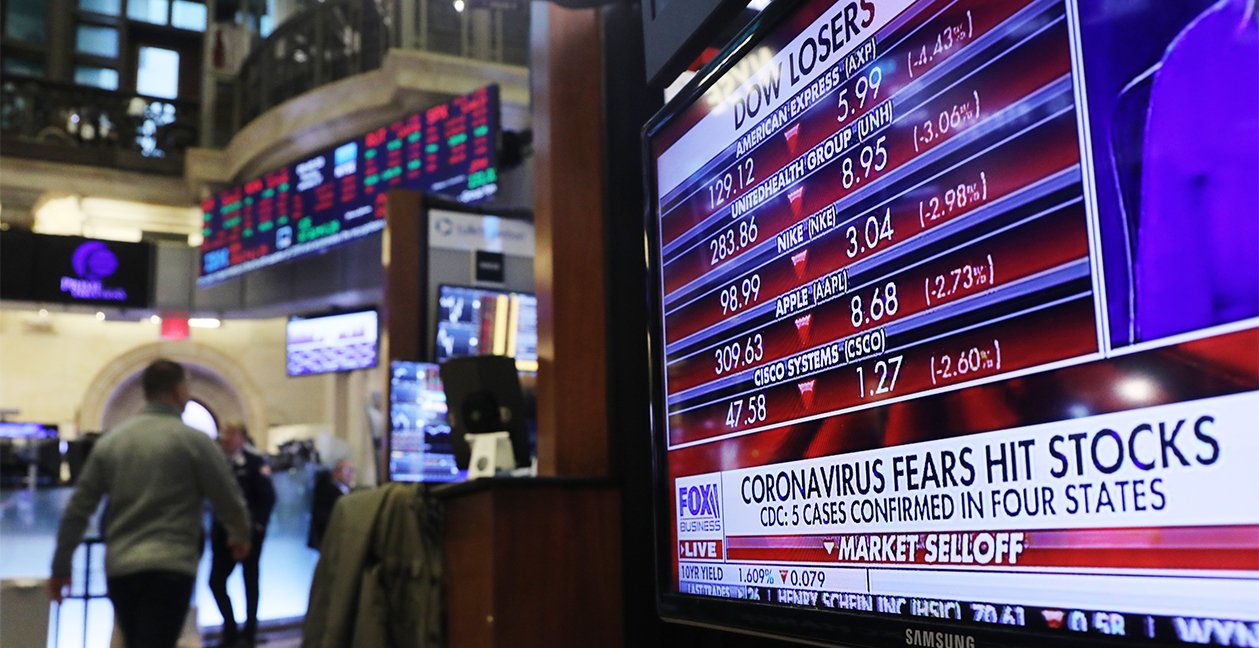Global anxiety over the coronavirus is climbing daily, as authorities around the world struggle to contain the deadly menace. Now an even more widespread threat has emerged, one with major economic implications: Coronavirus Fear.
The number of confirmed cases of CvF, as I’ll call it here, may have surpassed 100 million in the United States alone. CvF is highly contagious, and even a brief exposure to someone afflicted can produce the condition. Hospitals and hotlines have been flooded by people who fear they may have been or might become exposed to the coronavirus outbreak.
The 2019 novel coronavirus, or 2019-nCoV, can mimic everyday conditions such as the common cold at the onset; its death toll has reached reached 132, authorities say. CvF, meanwhile, has led to quarantines and travel restrictions.
Can fear of a pandemic—apart from a pandemic itself—wreak havoc on global commerce? In a global economy and stock market heavily influenced by confidence and sentiment, there is nothing fake about the news of coronavirus fear. Markets and economies are already teetering as a result of CvF. The Dow Jones had its worst day in three months over fears of the coronavirus, dropping more than 450 points on Monday. It has rebounded somewhat, but at least one analyst is warning of a “Lehman-type” meltdown, referencing the crash of 2008.

There is precedent for economic repercussions. The 2003 epidemic of SARS fear sent the continent of Asia into a momentary recession as schools closed, factories shut down, and travel came to a halt; the economic toll during the crisis was estimated to be $33 billion. Some are predicting an even higher toll associated with the coronavirus situation of 2020.
If there is any good news here, it is that 2019-nCoV appears less lethal to humans than SARS and the trajectory of actual deaths is only modestly higher than the SARS pandemic of 2003. The first alert by WHO regarding SARS occurred on March 12, 2003. The first alert by CDC regarding SARS occurred on March 15, 2003. By March 19, 2003, 9 deaths were attributed to SARS. The count climbed to 49 in one week. By April 30, 2003, 49 days after the first WHO alert, the death toll was 372. By comparison, the first alert by WHO regarding 2019-nCoV occurred on December 31, 2019. The first alert by CDC regarding 2019-nCoV occurred on January 8, 2020. As of January 28, 2020, 29 days after the initial WHO alert, 132 total deaths have been reported related to 2019-nCoV.
When it was all said and done, the SARS virus was implicated in the deaths of 774 people in 17 countries from 2002 to 2004—a small number when compared to the typical annual death toll from the flu, which is in the tens of thousands in the United States alone. Similarly, the cumulative global death toll due to the Bird Flu, or H5N1, from 2004-2013 was 701. These death tolls were far below the doomsday scenarios that panicked the public and stalled the economy during the early days of the outbreak.

Indeed, it is unclear how many cases of SARS actually even occurred in the U.S. By December 2003, after the initial media feeding frenzy waned in the cold light of day, only 8 out of the original 156 cases reported in the media as SARS were later confirmed by serological evidence. Another 19 cases were reported as probable for SARS but not confirmed by serological evidence. There were no U.S. deaths. As for 2019-nCoV, as of January 27, 2020, the CDC has reported five cases and no deaths in the United States.
Perhaps the panic-driven containment campaign triggered by media-fueled fears was what saved the world from a larger death toll in those potential pandemics. Perhaps not. While the growth pattern of 2019-nCoV and CvF so far appears not too dissimilar to viral and fear pandemics of the past, we don’t know if things could be different this time. However, what we do know is this. Flu is a protean disease that can appear both benign and plague-like. This dualism endows it unusual propensity to stoke and spread fear by subverting human herd instincts, especially in the social media era when the virality of fear far exceeds the virality of the virus itself.
Joon Yun is a principal of the Yun Family Foundation.







